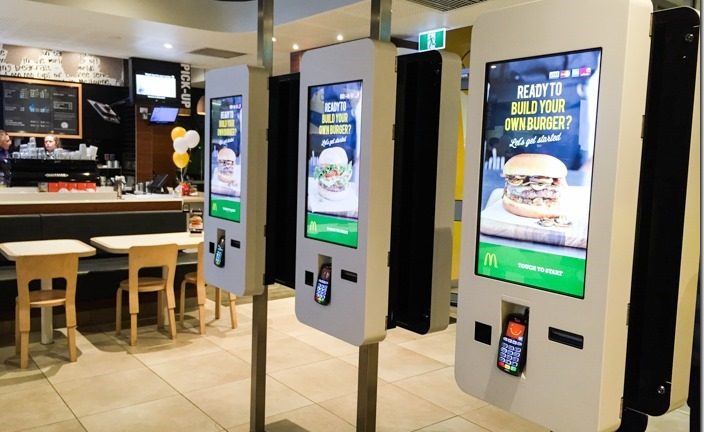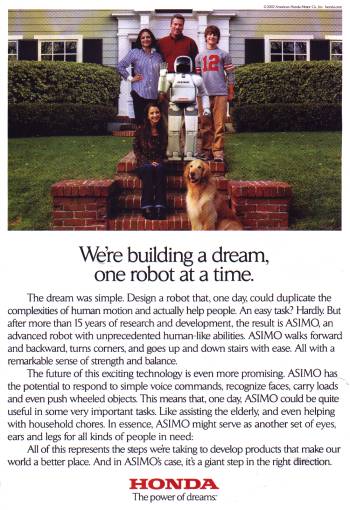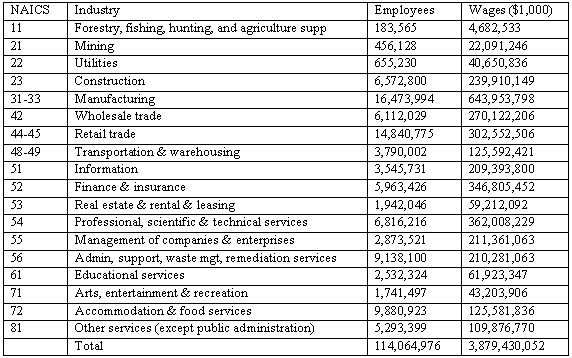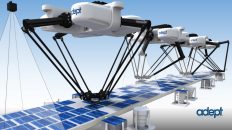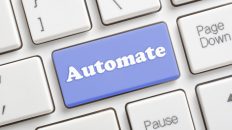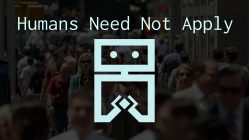This is a repost of the original article
View the kindle version here
I went to McDonald’s this weekend with the kids. We go to McDonald’s to eat about once a week because it is a mile from the house and has an indoor play area. Our normal routine is to walk in to McDonald’s, stand in line, order, stand around waiting for the order, sit down, eat and play.
On Sunday, this decades-old routine changed forever. When we walked in to McDonald’s, an attractive woman in a suit greeted us and said, “Are you planning to visit the play area tonight?” The kids screamed, “Yeah!” “McDonald’s has a new system that you can use to order your food right in the play area. Would you like to try it?” The kids screamed, “Yeah!”
The woman walks us over to a pair of kiosks in the play area. She starts to show me how the kiosks work and the kids scream, “We want to do it!” So I pull up a chair and the kids stand on it while the (extremely patient) woman in a suit walks the kids through the screens. David ordered his food, Irena ordered her food, I ordered my food. It’s a simple system. Then it was time to pay. Interestingly, the kiosk only took cash in the form of bills. So I fed my bills into the machine. Then you take a little plastic number to set on your table and type the number in. The transaction is complete.
We sat down at a table. We put our number in the center of the table and waited. In about 10 seconds the kids screamed, “When is our food going to get here???” I said, “Let’s count.” In less than two minutes a woman in an apron put a tray with our food on the table, handed us our change, took the plastic number and left.
You know what? It is a nice system. It works. It is much nicer than standing in line. The only improvement I would request is the ability to use a credit card.
As nice as this system is, however, I think that it represents the tip of an iceberg that we do not understand. This iceberg is going to change the American economy in ways that are very hard to imagine.
The Iceberg
The iceberg looks like this. On that same day, I interacted with five different automated systems like the kiosks in McDonald’s:
I got money in the morning from the ATM.
I bought gas from an automated pump.
I bought groceries at BJ’s (a warehouse club) using an extremely well-designed self-service check out line.
I bought some stuff for the house at Home Depot using their not-as-well-designed-as-BJ’s self-service check out line.
I bought my food at McDonald’s at the kiosk, as described above.
All of these systems are very easy-to-use from a customer standpoint, they are fast, and they lower the cost of doing business and should therefore lead to lower prices. All of that is good, so these automated systems will proliferate rapidly.
The problem is that these systems will also eliminate jobs in massive numbers. In fact, we are about to see a seismic shift in the American workforce. As a nation, we have no way to understand or handle the level of unemployment that we will see in our economy over the next several decades.
These kiosks and self-service systems are the beginning of the robotic revolution. When most people think about robots, they think about independent, autonomous, talking robots like the ones we see in science fiction films. C-3PO and R2-D2 are powerful robotic images that have been around for decades. Robots like these will come into our lives much more quickly than we imagine — self-service checkout systems are the first primitive signs of the trend. Here is one view from the future to show you where we are headed:
Automated retail systems like ATMs, kiosks and self-service checkout lines marked the beginning of the robotic revolution. Over the course of fifteen years starting in 2001, these systems proliferated and evolved until nearly every retail transaction could be handled in an automated way. Five million jobs in the retail sector were lost as a result of these systems.
The next step was autonomous, humanoid robots. The mechanics of walking were not simple, but Honda had proven that those problems could be solved with the creation of its ASIMO robot at the turn of the century. Sony and other manufacturers followed Honda’s lead. Over the course of two decades, engineers refined this hardware and the software controlling it to the point where they could create humanoid bodyforms with the grace and precision of a ballerina or the mass and sheer strength of the Incredible Hulk.
Decades of research and development work on autonomous robotic intelligence finally started to pay off. By 2025, the first machines that could see, hear, move and manipulate objects at a level roughly equivalent to human beings were making their way from research labs into the marketplace. These robots could not “think” creatively like human beings, but that did not matter. Massive AI systems evolved rapidly and allowed machines to perform in ways that seemed very human.
Humanoid robots soon cost less than the average car, and prices kept falling. A typical model had two arms, two legs and the normal human-type sensors like vision, hearing and touch. Power came from small, easily recharged fuel cells. The humanoid form was preferred, as opposed to something odd like R2-D2, because a humanoid shape fit easily into an environment designed around the human body. A humanoid robot could ride an escalator, climb stairs, drive a car, and so on without any trouble.
Once the humanoid robot became a commodity item, robots began to move in and replace humans in the workplace in a significant way. The first wave of replacement began around 2030, starting with jobs in the fast food industry. Robots also filled janitorial and housekeeping positions in hotels, motels, malls, airports, amusement parks and so on.
The economics of one of these humanoid robots made the decision to buy them almost automatic. In 2030 you could buy a humanoid robot for about $10,000. That robot could clean bathrooms, take out trash, wipe down tables, mop floors, sweep parking lots, mow grass and so on. One robot replaced three six-hour-a-day employees. The owner fired the three employees and in just four months the owner recovered the cost of the robot. The robot would last for many years and would happily work 24 hours a day. The robot also did a far better job — for example, the bathrooms were absolutely spotless. It was impossible to pass up a deal like that, so corporations began buying armies of humanoid robots to replace human employees.
The first completely robotic fast food restaurant opened in 2031. It had some rough edges, but by 2035 the rough edges were gone and by 2040 most restaurants were completely robotic. By 2055 the robots were everywhere. The changeover was that fast. It was a startling, amazing transformation and the whole thing happened in only 25 years or so starting in 2030.
In 2055 the nation hit a big milestone — over half of the American workforce was unemployed, and the number was still rising. Nearly every “normal” job that had been filled by a human being in 2001 was filled by a robot instead. At restaurants, robots did all the cooking, cleaning and order taking. At construction sites, robots did everything — Robots poured the concrete, laid brick, built the home’s frame, put in the windows and doors, sided the house, roofed it, plumbed it, wired it, hung the drywall, painted it, etc. At the airport, robots flew the planes, sold the tickets, moved the luggage, handled security, kept the building clean and managed air traffic control. At the hospital robots cared for the patients, cooked and delivered the food, cleaned everything and handled many of the administrative tasks. At the mall, stores were stocked, cleaned and clerked by robots. At the amusement park, hundreds of robots ran the rides, cleaned the park and sold the concessions. On the roads, robots drove all the cars and trucks. Companies like Fedex, UPS and the post office had huge numbers of robots instead of people sorting packages, driving trucks and making deliveries.
By 2055 robots had taken over the workplace and there was no turning back.
The Jobless Recovery
The “Jobless Recovery” that we are currently experiencing in the U.S. is big news.
See for example The Mystery of the ‘jobless recovery’:
“Consider these facts: Employment growth at the moment is the lowest for any recovery since the government started keeping such statistics in 1939. The labor force shrank in July as discouraged workers stopped seeking employment. The number of people employed has fallen by more than 1 million since the “recovery” began in the fall of 2001.”
The Washington Post notes that we are now witnessing, “the longest hiring downturn since the Depression”. [ref] The article also notes, “The vast majority of the 2.7 million job losses since the 2001 recession began were the result of permanent changes in the U.S. economy and are not coming back.”
There is no mystery — the jobless recovery is exactly what you would expect in a robotic nation. When automation and robots eliminate jobs, they are gone for good. The economy then has to invent new jobs. But it is much harder to do that now because robots can quickly fill the new jobs that get invented. See the FAQ for additional information.
I know what you are thinking. You are thinking, “This is impossible — there will not be humanoid robots in 2055. It is a ridiculous suggestion.” But they will be here. Humanoid robots are as inevitable as airplanes.
Imagine this. Imagine that you could travel back in time to the year 1900. Imagine that you stand on a soap box on a city street corner in 1900 and you say to the gathering crowd, “By 1955, people will be flying at supersonic speeds in sleek aircraft and traveling coast to coast in just a few hours.” In 1900, it would have been insane to suggest that. In 1900, airplanes did not even exist. Orville and Wilbur did not make the first flight until 1903. The Model T Ford did not appear until 1909.
Yet, by 1947, Chuck Yeager flew the X1 at supersonic speeds. In 1954, the B-52 bomber made its maiden flight. It took only 51 years to go from a rickety wooden airplane flying at 10 MPH, to a gigantic aluminum jet-powered Stratofortress carrying 70,000 pounds of bombs halfway around the world at 550 MPH. In 1958, Pan Am started non-stop jet flights between New York and Paris in the Boeing 707. In 1969, Americans set foot on the moon. It is unbelievable what engineers and corporations can accomplish in 50 or 60 short years.
There were millions of people in 1900 who believed that humans would never fly. They were completely wrong. However, I don’t think anyone in 1900 could imagine the B-52 happening in 54 years.
Over the next 55 years, the same thing will happen to us with robots. In the process, the entire employment landscape in America will change. Here is why that will happen.
Moore’s Law
You have probably heard about Moore’s Law. It says that CPU power doubles every 18 to 24 months or so. History shows Moore’s law very clearly. You can see it, for example, by charting the course of Intel microprocessor chips starting with Intel’s first single-chip microprocessor in 1971:
In 1971, Intel released the 4004 microprocessor. It was a 4-bit chip running at 108 kilohertz. It had about 2,300 transistors. By today’s standards it was extremely simple, but it was powerful enough to make one of the first electronic calculators possible.
In 1981, IBM released the first IBM PC. The original PC was based on the Intel 8088 processor. The 8088 ran at 4.7 megahertz (43 times faster clock speed than the 4004) and had nearly 30,000 transistors (10 times more).
In 1993, Intel released the first Pentium processor. This chip ran at 60 megahertz (13 times faster clock speed than the 8088) and had over three million transistors (10 times more).
In 2000 the Pentium 4 appeared. It had a clock speed of 1.5 gigahertz (25 times faster clock speed than the Pentium) and it had 42 million transistors (13 times more).
You can see that there are two trends that combine to make computer chips more and more powerful. First there is the increasing clock speed. If you take any chip and double its clock speed, then it can perform twice as many operations per second. Then there is the increasing number of transistors per chip. More transistors let you get more done per clock cycle. For example, with the 8088 processor it took approximately 80 clock cycles to multiply two 16-bit integers together. Today you can multiply two 32-bit floating point numbers every clock cycle. Some chips today even allow you to get more than one floating point operation done per clock cycle.
Taking Moore’s law literally, you would expect processor power to increase by a factor of 1,000 every 15 or 20 years. Between 1981 and 2001, that was definitely the case. Clock speed improved by a factor of over 300 during that time, and the number of transistors per chip increased by a factor of 1,400. A processor in 2002 is 10,000 times faster than a processor in 1982 was. This trend has been in place for decades, and there is nothing to indicate that it will slow down any time soon. Scientists and engineers always get around the limitations that threaten Moore’s law by developing new technologies.
The same thing happens with RAM chips and hard disk space. A 10 megabyte hard disk cost about $1,000 in 1982. Today you can buy a 250 gigabyte drive that is twice as fast for $350. Today’s drive is 25,000 times bigger and costs one-third the price of the 1982 model because of Moore’s law. In the same time period — 1982 to 2002 — standard RAM (Random Access Memory) available in a home machine has gone from 64 kilobytes to 128 megabytes — it improved by of factor of 2,000.
What if we simply extrapolate out, taking the idea that every 20 years things improve by a factor of 1,000 or 10,000? What we get is a machine in 2020 that has a processor running at something like 10 trillion operations per second. It has a terabyte of RAM and one or two petabytes of storage space (a petabyte is one quadrillion bytes). A machine with this kind of power is nearly incomprehensible — there are only two or three machines on the planet with this kind of power today (the monstrous NEC Earth Simulator, with 5,000 separate processor chips working together, is one example). In 2020, every kid will be running their video games on a $500 machine that has that kind of power.
What if we extrapolate another 20 years after that, to 2040? A typical home machine at that point will be 1,000 times faster than the 2020 machine. Human brains are thought to be able to process at a rate of approximately one quadrillion operations per second. A CPU in the 2040 time frame could have the processing power of a human brain, and it will cost $1,000. It will have a petabyte (one quadrillion bytes) of RAM. It will have one exabyte of storage space. An exabyte is 1,000 quadrillion bytes. That’s what Moore’s law predicts.
Between 1981 and 2002, the processing power, hard disk space and RAM in a typical desktop computer increased dramatically because of Moore’s Law. Extrapolating out to the years 2021 and 2041 shows a startling increase in computer power. The point where small, inexpensive computers have power approaching that of the human brain is just a few decades away.
The computer power we will have in a home machine around 2050 will be utterly amazing. A typical home computer will have processing power and memory capacity that exceeds that of a human brain. What we will have in 2100 is anyone’s guess. The power of a million human brains on the desktop? It is impossible to imagine, but not unlikely.
We need to start thinking about that future today. People are talking optimistically about fielding a team of humanoid robotic soccer players able to beat the best human players in 2050. Imagine a team of C-3POs running and kicking as well as or better than the best human soccer stars, but never getting tired or injured. Imagine that same sort of robot taking 50% of America’s jobs. This Honda ad for ASIMO, and the fact that Honda is running it, are telling:
Honda ad from the back cover of Smithsonian magazine, January 2003
As the ad says, “ASIMO could be quite useful in some very important tasks.” One of those very important tasks will be to take your job. [For details on ASIMO and a video, Click Here]
The point is simple. In the 2050 time frame, you can expect to buy a $1,000 home computer that has the computing power and memory of the human brain. Manufacturers will marry that computer with a humanoid robotic chassis like ASIMO, a fuel cell and advanced AI software to create autonomous humanoid robots with startling capabilities. It is not really hard to imagine that we will have robots like C-3PO walking around and filling jobs as early as the 2030 time frame. What’s missing from robots right now is brainpower, and by 2030 we will start to have more silicon brainpower than we know what to do with.
The Vision Thing
One of the key capabilities limiting robotic expansion at the moment is image processing — the ability of robots to look at a scene like a human does and detect all the objects in the scene. Without general, flexible vision algorthms, it is hard for a robot to do much. For example, it is hard for a blind robot to clean a bathroom or drive a car. Part of the problem is raw CPU power, but that problem will be solved over the next 20 to 30 years because of Moore’s law. The other part is a software problem. We don’t have really good algorithms yet. My prediction is that we will see significant progress in the image processing field over the next 20 years.
Think about the changes that will take place once basic research in image processing yields the algorithms we need. Suddenly it will be easy for robots to walk around and manipulate objects in any human environment.
Robotic cars and trucks are one obvious application for vision systems. There are more than 40,000 deaths in the U.S. every year because of car accidents. Human negligence causes most of these accidents. With robots doing all the driving, the number of accidents will go way down and we will eliminate one of the leading causes of death in the U.S. Unfortunately, robotic vehicles will also leave every taxi driver, bus driver, truck driver, etc. out of work.
Robots with vision systems will be able to do all the cleaning in every hotel, store, airport and restaurant. Things will be spotless, but that will unemploy perhaps five million people.
Robots with vision can stack brick, lay tile, paint and put on roofs all day and all night. Five million more people will be out of work.
Robots with vision can easily stock shelves in stores. Think of all the workers stocking shelves, restocking merchandise, taking inventory, directing customers and manning cash resisters in places like Wal-Mart, K-Mart, Target, Home Depot, Lowes, BJ’s, Sam’s Club, Toys R Us, Sears, J.C. Penny’s, Barnes and Noble, Borders, Best Buy, Circuit City, Office Max, Staples, Office Depot, Kroger’s, Winn-Dixie, Pet Depot and on and on and on. More than 10 million employees will be on the street.
Armies of robots with built-in night vision will be able to provide security and policing unlike anything we can imagine today.
And so on.
A single research area — computer vision — will have a tremendous impact once it reaches its goal of general, flexible image processing algorithms.
This is analogous to the development of airplanes. Nothing happened in the field of aviation until the Wright Brothers made the breakthrough that got the first airplane off the ground. 44 short years after the breakthrough, supersonic flight was possible. Once robots have flexible, accurate vision systems, the pace of change will be unbelievably rapid and unstoppable. Tens of millions of people will become unemployed over the course of just two to three decades.
If you think about it, robots are a very good thing. Human beings should not be driving trucks, flipping burgers or scrubbing toilets. These activites represent a massive waste of human potential. The question is: what will these tens of millions of people do to make a living when their tens of millions of jobs evaporate? What will happen to the economy when the unemployment rate reaches 30% or 40%?
Who Will Be First?
Who will be the first large group of employees to be completely automated out of their jobs by robots? Chances are that it will be pilots. There are already robots in the cockpit: auto-pilots. We are rapidly coming to the point where airplanes can autonomously take off, fly to their destinations and land without human intervention. Airplanes use radar for their vision systems, and radar has been around for more than half a century. Pilots are prone to human error and they are incredibly expensive for the airlines.
The New Employment Landscape
We have no way to understand what is coming or how it will affect us. Keep this fact in mind: the workplace of today is not really that much different from the workplace of 100 years ago. Humans do almost all of the work today, just like they did in 1900. A restaurant today is nearly identical to a restaurant in 1900. An airport, hotel or amusement park today is nearly identical to any airport, hotel or amusement park seen decades ago. Humans do nearly everything today in the workplace, just like they always have. That’s because humans, unlike robots, can see, hear and understand language. Robots have never really competed with humans for real jobs because computers have never had the vision systems needed to drive cars, work in restaurants or deliver packages. All that will change very quickly by the middle of the 21st century. As CPU chips and memory systems finally reach parity with the human brain, and then surpass it, robots will be able to perform nearly any normal job that a human performs today. The self-service checkout lines that are springing up everywhere are the first sign of the trend. See Robots in 2015 for details.
The problem, of course, is that all of these robots will eliminate a huge portion of the jobs currently held by human beings. For example, there are 3.5 million jobs in the fast food industry alone. Many of those will be lost to kiosks. Many more will be lost to robots that can flip burgers and clean bathrooms. Eventually they will all be lost. The only people who will still have jobs in the fast food industry will be the senior management team at corporate headquarters.
The same sort of thing will happen in retail stores, hotels, airports, factories, construction sites, delivery companies and so on. All of these jobs will evaporate at approximately the same time, leaving all of those workers unemployed. The Post Office, FedEx and UPS together employed over a million workers in 2002. Once robots can drive the trucks and deliver the packages at a much lower cost than human workers can, those 1,000,000 or so employees will be out on the street.
If you look at the 2000 census figures, you can see the magnitude of the problem. According to the census, there were 114 million employees working for 7 million companies in 2000. The employees brought home almost $4 trillion in wages that year. Here’s the breakdown by industry:
U.S. jobs by industry according to the 2000 Census.
When you look at this chart, it is easy to understand that there will be huge job losses by 2040 or 2050 as robots move into the workplace. For example:
Nearly every construction job will go to a robot. That’s about 6 million jobs lost.
Nearly every manufacturing job will go to a robot. That’s 16 million jobs lost.
Nearly every transportation job will go to a robot. That’s 3 million jobs lost.
Many wholesale and retail jobs will go to robots. That’s at least 15 million lost jobs.
Nearly every hotel and restaurant job will go to a robot. That’s 10 million jobs lost.
If you add that all up, it’s over 50 million jobs lost to robots. That is a conservative estimate. By 2050 or so, it is very likely that over half the jobs in the United States will be held by robots.
All the people who are holding jobs like those today will be unemployed.
American society has no way to deal with a situation where half of the workers are unemployed. During the Great Depression at its very worst, 25% of the population was unemployed. In the robotic future, where 50 million jobs are lost, there is the potential for 50% unemployment. The conventional wisdom says that the economy will create 50 million new jobs to absorb all the unemployed people, but that raises two important questions:
What will those new jobs be? They won’t be in manufacturing — robots will hold all the manufacturing jobs. They won’t be in the service sector (where most new jobs are now) — robots will work in all the restaurants and retail stores. They won’t be in transportation — robots will be driving everything. They won’t be in security (robotic police, robotic firefighters), the military (robotic soldiers), entertainment (robotic actors), medicine (robotic doctors, nurses, pharmacists, counselors), construction (robotic construction workers), aviation (robotic pilots, robotic air traffic controllers), office work (robotic receptionists, call centers and managers), research (robotic scientists), education (robotic teachers and computer-based training), programming or engineering (outsourced to India at one-tenth the cost), farming (robotic agricultural machinery), etc. We are assuming that the economy is going to invent an entirely new category of employment that will absorb half of the working population.
Why isn’t the economy creating those new jobs now? Today there are millions of unemployed people. There are also tens of millions of people who would gladly abandon their minimum wage jobs scrubbing toilets, flipping burgers, driving trucks and shelving inventory for something better. This imaginary new category of employment does not hinge on technology — it is going to employ people, after all, in massive numbers — it is going to employ half of today’s working population. Why don’t we see any evidence of this new category of jobs today?
Labor = Money
Right now, a majority of people in America trade their labor for money, and then they use the money to participate in the economy. Our entire society is built around a simple equation: labor = money. This equation explains why any new labor-saving technology is disruptive — it threatens a group of people with joblessness and welfare.
Autonomous humanoid robots will take disruption to a whole new level. Once fully-autonomous, general-purpose humanoid robots are as easy to buy as an automobile, most people in the economy will not be able to make the labor = money trade anymore. They will have no way to earn money, and that means they end up homeless and on welfare.
With that many people on welfare, cost control becomes a big issue. We are already seeing the first signs of it today. The January 20, 2003 issue of Time magazine notes the trend:
“Cities have lost patience, concentrating on getting the homeless out of sight. In New York City, where shelter space can’t be created fast enough, Mayor Mike Bloomberg has proposed using old cruise ships for housing.”
This is not science fiction — this is today’s news. What we are talking about here are massive, government-controlled welfare dormitories keeping everyone who is unemployed “out of sight”. Homelessness is increasing because millions of people are living on the edge. Millions of working adults and families are trying to make a living from millions of low-paying jobs at places like Wal-Mart and McDonald’s. Most of those low-paying jobs are about to evaporate.
This article from the NYTimes sums up our current situation with this quote:
Jobs have not followed growth, the committee wrote, because of increases in workers’ productivity. In fact, Ms. Reaser said, the unemployment rate is unlikely to fall until the economy expands at an annual rate of 3.5 percent or 4 percent, the sort of pace attained in only two quarters since the recovery supposedly began.
With productivity growing at more than 2 percent a year, and the labor force growing about 1 percent a year, she said, the “hurdle rate” of growth for increasing the share of Americans with jobs cannot be less than 3 percent.
The term “worker productivity” in this quote means “robots”. We are seeing the tip of the iceberg right now, because robotic replacement of human workers in every employment sector is about to accelerate rapidly. Combine that with a powerful trend pushing high-paying IT jobs to India. Combine it with the rapid loss of call-center jobs to India. When the first wave of robots and offshore production cut in to the factory workforce in the 20th century, the slack was picked up by service sector jobs. Now we are about to see the combined loss of massive numbers of service-sector jobs, most of the remaining jobs in factories, and many white collar jobs, all at the same time.
When a significant portion of the normal American population is permanently living in government welfare dormitories because of unemployment, what we will have is a third-world nation. These citizens will be imprisoned by unemployment in their own society. If you are an adult in America and you do not have a job, you are flat out of luck. That is how our economy is structured today — you cannot live your life unless you have a job. Many people — perhaps a majority of Americans — will find themselves out of luck in the coming decades.
The arrival of humanoid robots should be a cause for celebration. With the robots doing most of the work, it should be possible for everyone to go on perpetual vacation. Instead, robots will displace millions of employees, leaving them unable to find work and therefore destitute. I believe that it is time to start rethinking our economy and understanding how we will allow people to live their lives in a robotic nation.
Imagine that you have a time machine and you are able to travel back in time to the year 1950:
If you walk into a restaurant, hotel or store in 1950, it would be nearly identical to a restaurant, hotel or store today. People do everything in both cases — people stock the shelves, prepare the food, serve the food, help customers, man the cash registers and sweep the floors in 2003 just like they did in 1950.
It’s the same on any construction site. In 1950, guys with circular saws and hammers built houses. Today it is guys with circular saws and nail guns. No big difference.
An airport in 1950 and an airport today are nearly identical. People take your tickets, handle the baggage, maintain the planes and pilot them in both cases.
Coney island in 1950 looks like any amusement park today, with people operating the rides, selling the concessions and keeping the park clean.
Industries like these are, by and large, completely untouched by automation today. These people-powered industries represent at least half of the jobs in the American job pool.
Now imagine the near-term future. In just a decade or two we begin to approach a point where CPU power rivals that of the human brain. This CPU power drives the creation of robots that take over all of these jobs. The unemployment rate in the United States skyrockets as cheap robots push expensive humans out of half the jobs that we see in our economy today. The automated checkout lines and kiosks that are popping up in places like Home Depot and McDonald’s are the first messengers of this robotic takeover.
When the robots start arriving in massive numbers to take half the jobs in America, the effects will be profound. At this moment in history, we are standing right on the edge of the transformation to a robotic nation. It is fascinating to stand on this edge and think about what the robots will mean to us as citizens of the United States.
Replacing all the Pilots
Robots in the workplace will be a very popular idea because they will eliminate labor costs. Pilots will be the first to go because pilots are incredibly expensive and their jobs are largely automated already.
Let’s say that, in 2015, one airline decides to completely automate the cockpit and eliminate its pilots. Since pilots are expensive, that airline will have a real price advantage over its competitors. That airline will also have far more scheduling flexibility because it will not have to worry about crew availability.
After that first airline makes the leap to the robotic cockpit, every airline will do the same thing. Competitive pressure will leave the other airlines with no choice. Southwest Airlines has shown us just how sensitive the airline industry is to lower prices.
The complete elimination of pilots from the airline industry will take just a few years. The 66,000 pilots in the Air Line Pilots Association will be out of work. These pilots are people who have spent thousands and thousands of hours training in their chosen profession. They have high salaries as well — up to $250,000 per year is not uncommon for a senior pilot flying commercial aircraft.
The economy could weather the loss of those 66,000 jobs. With an American workforce of over 100 million employees, 66,000 people is a drop in the bucket. We will all feel sorry for the pilots for a few minutes, but then we will get over it because ticket prices will go down. The pilots will all adapt by getting jobs at Wal-Mart or Target or McDonald’s. This sort of thing happens all the time in any capitalistic society.
The question is, will all the unemployed pilots be able to get jobs at Wal-Mart or Target or McDonald’s? The answer to that question is where things get uncomfortable.
The Pace of Change
It is hard to believe but true that the World Wide Web did not exist 10 years ago. On November 11, 1993, version 1.0 of Mosaic, the first Web Browser, became available on the Internet. The Web was born on the day that Mosaic appeared. Think about everything that has changed in those 10 years. No normal person had an Internet connection in 1993. Today, more than 60 percent of U.S. households have an Internet connection. No one shopped on the Web, bought tickets on the Web, read the news on the Web, hooked up with dates on the Web, blogged on the Web, participated in auctions on the Web, looked up movie trailers or reviews on the Web, traded or purchased music on the Web, used Instant Messaging on the Web, etc. in 1993. Today these activities are taken completely for granted. A tiny handful of people used email in 1993. Today email is essential for both business and personal communication, with trillions of messages sent every year. And The entire Internet Bubble came and went on the stock market since 1993. Hundreds of billions of dollars were invested and lost in new Internet companies. All in 10 years.
That pace of change seems fast, and it is, but it is not unusual in America. Even 100 years ago things could change very quickly. The first Model T Ford, for example, was sold in the 1909 model year, and in that first year only 10,000 were manufactured. By 1912 there were 3,500 Ford dealers selling 300,000 cars per year. Just a few years later, Ford was selling 2 million cars per year and there were over 100 companies competing with Ford. Even a century ago, a popular idea could catch on and spread very quickly.
Robots will spread at the same remarkable rate throughout the job market.
Robots in Retailers
In 2015, at about the same time that the airlines are laying off all of their pilots, Wal-Mart or Target or some other large retailer will be introducing a totally automated inventory management system. Every shelf will be fitted with RFID tags and bar codes, allowing a mobile pick-and-place robot to find the exact shelf location of every product in the store. Every individual product in the warehouse will also be fitted with an RFID tag and bar code, so the robot will be able to pick up and identify every product that it needs to shelve. A relatively simple computer vision system will allow the robot to stack items on the shelves. These inventory management robots will operate 24-hours-a-day shuttling merchandise from the back of the store onto the shelves as items are sold. The robots will also constantly straighten the shelves and re-shelve merchandise. All of the technology needed to do this is nearly in place today.
By 2015, every big box retailer will be using automated checkout lines. Robotic help systems will guide shoppers in the stores. The automated inventory management robots will allow the first retailer to lay off a huge percentage of its employees. Competitive pressure will force Wal-mart, K-Mart, Target, Home Depot, Lowes, BJ’s, Sam’s Club, Toys R Us, Sears, J.C. Penny’s, Barnes and Noble, Borders, Best Buy, Circuit City, Office Max, Staples, Office Depot, Kroger’s, Winn-Dixie, Pet Depot and so on to adopt the same robotic inventory systems in their stores. The entire transition will happen in just five years or so. Any company that does not automate will be at such a pricing disadvantage that it will go out of business. Ten million unemployed workers dumped onto the job market over the course of five years will have a profound effect on the unemployment statistics in the United States.
The problem is that this same sort of thing will be happening in every sector of the economy at a very rapid pace, dumping millions more unemployed workers onto the job market at the same time.
Creating New Jobs
When Ford started selling the Model T in 1909, the industrialized automotive industry was born. This new industry eventually created millions of new jobs.
Why won’t all the new companies that are making these robots create millions of new jobs in 2015? Why won’t these new jobs absorb all of the unemployed pilots and service-sector employees? Think about it:
Will these millions of new robots create manufacturing jobs? Not in the United States. Robots will be assembling robots. Even if you assume that some people will be involved in assembling them, all of the assembly will take place in places like China, Mexico, Indonesia, Korea, etc. where manufacturing costs are far lower than they are in the U.S.
Will these millions of new robots create programming and engineering jobs? Not in the United States. U.S. corporations are in the process of moving the bulk of all programming and engineering jobs to places like India, Russia, China, etc. where the programmers and engineers cost a tenth as much as they do in the U.S.
Will the millions of new robots create jobs in sales? Not in the United States. Corporations ordering new robots will purchase their robots over the Web without any human intervention, in the same way that you can order a Segway from Amazon today.
Will these millions of new robots create repair and servicing jobs? Not in the United States. When a robot needs repair, another robot will bundle it onto a pallet. A robotic forklift will place the pallet on a truck. The truck will drive to a repair facility. The facility will repair the robot with highly automated systems that require no human intervention or supervision. Human beings will not be repairing robots — robots will.
The rise of the robotic nation will not create new jobs for people — it will create jobs for robots.
In the past, automation has not had this effect. For example, before there were backhoes there were men with shovels. A backhoe replaced a hundred men with shovels. But new businesses and factories sprang up to manufacture the backhoes, and those companies hired people — many of them former ditch diggers. All of these new businesses and factories tended to employ many of the workers displaced by technology. It has never been a perfect system — for example, the book The Grapes of Wrath chronicles just how bad things can get when a large segment of workers in the economy gets displaced. But, ignoring short-term displacements like that, the economy has generally absorbed every unemployed worker in the new businesses that get created by advances in technology.
The unusual thing about the robotic revolution is that the robots will come and displace millions of workers throughout the economy, but the robot industry will create very few new jobs. Millions will be unemployed in America, but there will be nothing for them to do.
Conventional wisdom says that the economy will respond to all of these unemployed workers by creating new jobs for them. But look at our economy today. For the past 40 years, the economy has been generating millions of low-paying service sector jobs that create a large class of employees known as the working poor. 60% of the American workforce makes less than $14 per hour today [ref]. If the economy is going to be creating millions of high-paying, exciting, fulfilling jobs for all of these displaced workers, it would be doing it now. Why can’t all of the Wal-Mart/Target/McDonald’s/etc. employees who are going to get displaced in 2015 step into their new, exciting, higher-paying jobs right now, instead of waiting? It’s because the economy tends not create jobs like that in any sort of volume.
At this moment, instead of creating exciting new jobs, the economy is locked in a race to the bottom. This race is marked by a workplace that continuously creates lower-paying jobs instead of higher-paying ones.
Rationalizations
People who read Robotic Nation had a variety of rationalizations to explain why the coming wave of intelligent robots will have no effect on employment in the U.S. Here are some of the most common rationalizations:
“We will never create robots that have vision, touch and hearing like humans do. There will never be robots working in McDonalds or Wal-Mart.” This is no different from a person in 1900 saying “humans will never fly”.
“People will not go to stores and restaurants staffed by robots. People need human interaction.” ATMs have replaced tellers for a majority of banking transactions, and automated gas pumps handle most gasoline purchases now. People love to use automated systems. It is also easy to imagine walking into a robotic restaurant where the robots, using facial recognition systems, actually greet you when you arrive, know exactly what you like and do not like, etc. The expreience in a robotic restaurant is likely to be much more personal and friendly than most restaurants are today.
“Robots won’t eliminate jobs, they will create more jobs. Backhoes and bulldozers replaced all the people who used to dig ditches, but then those ditch diggers got jobs building backhoes and were a lot better off.” This article explains why that won’t be the case — robots will be making the robots, not people.
“Unemployed workers will riot, destroying the robots and taking back their jobs.” Part of the robotic nation will be a pervasive and extremely sensitive robot security force that will remove the word “riot” from our vocabulary.
“We will move to a 20 hour work week and everyone will be employed.” If that’s going to happen, why doesn’t it happen today? We are moving in the opposite direction right now, with people in service sector jobs making so little money that they have to work two or three jobs. There is no economic reason for business owners to raise pay or shorten hours when tens of millions of people are unemployed. Supply and demand dictates that wages will fall, not rise.
“Unemployed people will start their own businesses in massive numbers.” Unemployed people generally do not have the capital to start businesses, but even if they did the odds are against them. According to Robert Kiyosaki in the bestselling Rich Dad, Poor Dad, “The odds are against success: Nine out of 10 companies fail in five years. Of those that survive the first five years, nine out of every ten of those eventually fail, as well.” That’s a 1% chance of long-term success. If your business does not succeed, you are unemployed again.
The Race to the Bottom
The fast food industry provides a perfect demonstration of how the race to the bottom works. Almost every working American employed by the fast food industry is paid hourly, makes minimum wage or close to it, receives no benefits, no vacation time and no sick time. Employee hours are tracked so that no hourly employee works more than 40 hours a week, thereby avoiding overtime pay. Schedules can be extremely choppy, sometimes requiring employees to come in to work, go home and come back again during the same day. The pay of the nation’s 3.5 million fast food workers has been driven as close to zero as is legally allowed.
But that is not low enough. The fast food industry wants to drive worker pay even lower. The only way to do that is to eliminate the minimum wage. The book Fast Food Nation by Eric Schlosser describes the trend:
The fast food industry pays the minimum wage to a higher proportion of its workers than any other American industry. Consequently, a low minimum wage has long been a crucial part the fast food industry’s business plan. Between 1968 and 1990, the years when the fast food chains expanded at their fastest rate, the real value of the U.S. minimum wage fell by almost 40 percent. In the late 1990s, the real value of the U.S. minimum wage still remained about 27 percent lower than it was in the late 1960s. Nevertheless, the National Restaurant Association (NRA) has vehemently opposed any rise in the minimum wage at the federal, state or local level [minimum wage has been $5.15 since 1997]. About 60 large fast food companies — including Jack in the Box, Wendy’s, Chevy’s, and Red Lobster — have backed Congressional legislation that would essentially eliminate the federal minimum wage by allowing states to disregard it. Pete Meersman, the president of the Colorado Restaurant Association, advocates creating a federal guest worker program to import low-wage foodservice workers from overseas.
While the real value of the wages paid to restaurant workers has declined for the past three decades, the earnings of restaurant company executives have risen considerably. According to a 1997 survey in Nation’s Restaurant News, the average corporate executive bonus was $131,000, an increase of 20 percent over the previous year. [ref]
In this brief passage, you can see four different techniques that corporations use in their race to the bottom:
They hunt in packs.
They work closely with Congress to modify laws for their own benefit, even when those modifications adversely affect millions of employees.
They use multiple angles of attack. They prevent minimum wage increases. They work on guest worker programs. And they work to eliminate the minimum wage.
The upper echelon in these companies, while lowering the pay of everyone else, raise their own pay.
Robots completely change the equation, because robots make the minimum wage irrelevant. As robots become available, they will allow the fast food industry to dump all the minimum wage workers. The executives will make even more money, and who can blame them? We would all like to get bigger paychecks. The goal of a business owner is to make more and more money, not to create jobs or raise wages.
This is why robots will spread throughout the workforce with remarkable speed. The same sensitivity to labor costs will cause the high-speed replacement of employees in retail, construction, transportation, entertainment, etc., all at approximately the same time. Over the next decade or two, robots will begin releasing millions workers from their jobs. The bad news is that there will be nowhere else for these workers to go.
In the first part of the 20th century, productivity gains translated into higher pay and shorter hours for workers. In today’s economy it is just the opposite. Jobs at places like McDonald’s and Wal-Mart, as well as places like meat packing plants and factories, get fragmented into components that can be performed by any warm body. “Any warm body” means a minimum wage worker. This is what the race to the bottom is all about — the de-skilling of the workplace has been a fundamental theme of the American job market for the last century. It allows the easy replacement of low-skill workers (e.g. – turnover in the fast food industry is 300 to 400 percent), which means the lowest wages possible. So the U.S. economy is creating millions of minimum wage jobs, and minimum wage jobs are perfect for replacement by robots. The pace of that replacement will be startling to all of us.
Where Do We Want to Go?
Our society, as it is structured today, works like this — you must either own a profitable business, or work for someone who owns a business, in order to “make a living.” You have no choice. You must earn money in order to live your life. If you do not work and earn money, you are homeless.
Today, as in the past, the way that most people earn money is by getting a job. This makes jobs incredibly important to the American economy. That is why every U.S. President is focused on jobs and job creation. Right now we are standing right on the edge of an era where the number of jobs in our economy will be drastically reduced by robots. No Presidential speech or act of Congress is going to change that.
Massive unemployment in America is good for no one. Unemployed people will suffer tremendously, and so will businesses. The American economy depends on a healthy base of consumers spending their money. Massive unemployment causes a sharp downward spiral that hurts the entire economy and the entire nation.
The questions that we are raising here are profound. How do we prevent this downward spiral from happening? Are we smart enough to see the robotic revolution that is coming and plan for it prior to the crisis? Can we redesign the economy so that we enter the new era of robots smoothly? With robots doing most of the work, can we actually create a society that takes advantage of the leisure that robots can provide? Or will the tens of millions of people displaced by the robots end up being homeless and destitute, living in government welfare dormatories?
In other words: How do we want the robotic economy to work for the citizens of this nation? We should consciously think about that question. We should control our robotic future, rather than letting it happen randomly.
I believe that it is time to start rethinking our economy and understanding how we will allow people to live their lives in a robotic nation. Instead of “letting the robots happen to us” in a highly disruptive way, we should take this opportunity to think about how we want the U.S. economy to work for all of the citizens of the robotic nation. The time to be doing that thinking is now. The discussion starts in Robotic Freedom.

